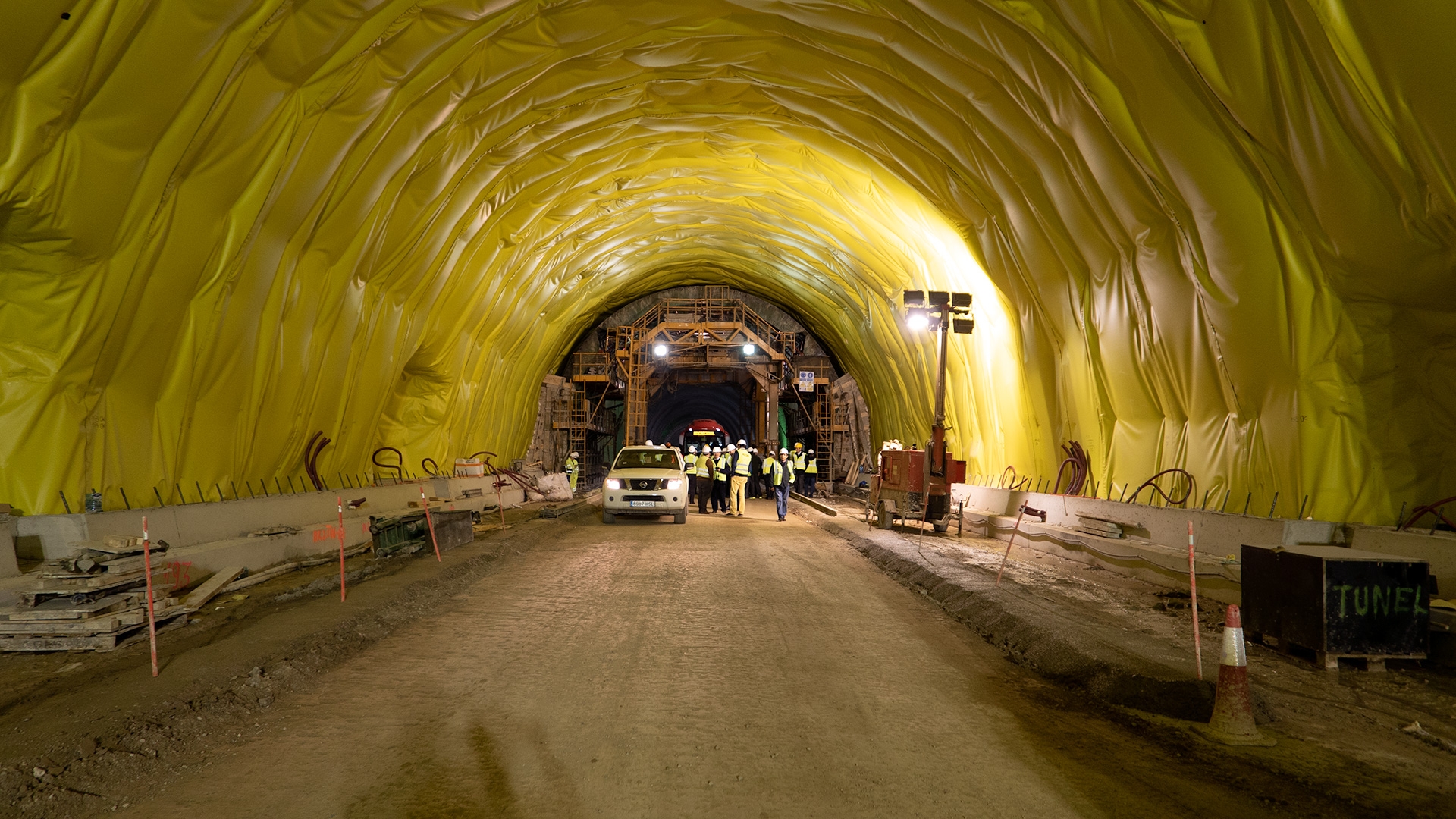The benefit with full cast tunnel vault

The most common solution is to perform the casting as a non-insulated concrete structure (PP fiber) with membrane etc. Such a solution, in conjunction with other rock protection measures, could reduce the scope of other fuses and also replace traditional water and frost protection solutions. The solution will have a significantly increased fire safety compared with polyethylene water and frost protection solutions.
The concept provides robust construction with a probable lifespan of more than 100 years, and limited need for service and maintenance over the lifetime. An extra impregnation / coating is recommended in the cleaning zone in the lower part of the tunnel wall. The construction is carried out after the tunnel has been driven all the way through.
Given this solution's ability to cope with water and frost problems, this is not perceived as a problem. The reason is likely that the frost front quickly passes past the thin water-conducting gap behind the membrane and continues into the mountain. The water that optionally freezes in the gap has limited possibility of affecting the concrete. It is important to achieve good contact with the rock, especially in the tunnel ceiling. Solutions for this are well-developed and tested in several nations. Such a membrane solution is now used for more than 30 years in new tunnels in Switzerland, regardless of traffic and climate conditions.
The Norwegian Public Roads Administration (NPRA) says in the Major Research and Development Project, Modern Road Tunnels - Construction Strategy for new Road Tunnels Basic Document (2012), that measures to ensure 100 years of life for low and medium-traffic tunnels are increased use of pre-injection, accurate contour blasting as well as quality performance of mountain stability. For medium / high and high traffic tunnels, the recommendations is to carry out a full cast tunnel vault with an inner membrane on a rectified spray concrete surface that ensures the necessary waterproofing.

 En
En 




